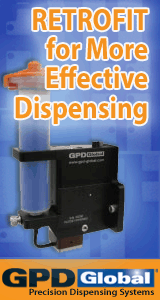Printed Circuit Board Assembly & PCB Design Forum
SMT electronics assembly manufacturing forum.
- SMTnet
- »
- Electronics Forum
- »
- Low Melt Solder Chemistry for use in Rework Process
Low Melt Solder Chemistry for use in Rework Process
Views: 3034
![]() After some precursory experimentation, I am planing on emplo...
- Feb 07, 2007
by
Donovan S.
After some precursory experimentation, I am planing on emplo...
- Feb 07, 2007
by
Donovan S.
![]()
![]()
![]() Bismuth is a low-melting metal with poor mechanical properti...
- Feb 07, 2007
by
davef
Bismuth is a low-melting metal with poor mechanical properti...
- Feb 07, 2007
by
davef
![]()
![]()
![]() Be sure that this component temp during operation does not e...
- Feb 07, 2007
by
RDR
Be sure that this component temp during operation does not e...
- Feb 07, 2007
by
RDR
![]()
![]()
![]() Thanks Russ and Dave.
Russ-
I was planning on thorough...
- Feb 07, 2007
by
Donovan S.
Thanks Russ and Dave.
Russ-
I was planning on thorough...
- Feb 07, 2007
by
Donovan S.
![]()
![]()
![]() I would not be concerned about the reliability when doing th...
- Feb 07, 2007
by
RDR
I would not be concerned about the reliability when doing th...
- Feb 07, 2007
by
RDR
![]()
![]()
![]() If you can't find bismuth wire, use 42Sn58Bi.
For more, l...
- Feb 07, 2007
by
davef
If you can't find bismuth wire, use 42Sn58Bi.
For more, l...
- Feb 07, 2007
by
davef
![]()
![]()
![]() or low melt Sn/Pb/Bi alloy, readily available and fairly che...
- Feb 07, 2007
by
or low melt Sn/Pb/Bi alloy, readily available and fairly che...
- Feb 07, 2007
by
- SMTnet
- »
- Electronics Forum
- »
- Low Melt Solder Chemistry for use in Rework Process







